Engraving (from French "graver") is a form of graphic art in which works of art are created by mirror-imprinting images onto paper from a printing plate. Engravers, using machines or by hand, carve a relief image on stone, wooden board, or metal plate based on an artist's sketch. It subsequently serves as a ready-made template for reproducing images. Unlike lithography, invented several centuries later, engraving utilizes deep or high printing techniques, rather than flat printing.
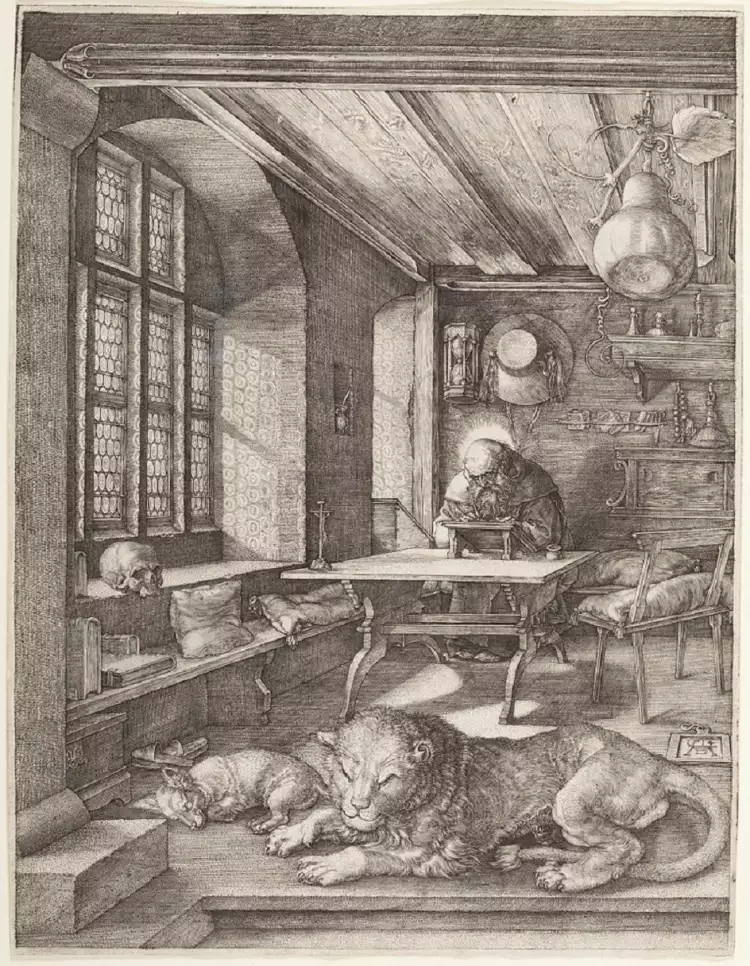 Engraving. Albrecht Dürer. Saint Jerome in his Study, 1514
Engraving. Albrecht Dürer. Saint Jerome in his Study, 1514
Engraving is a relatively young form of visual art. In Europe, it emerged much later than painting and sculpture, only at the turn of the 14th-15th centuries with the development of printing.
Types of Engraving
Besides the main classification based on the method of impression (printing techniques), engravings are also differentiated by various other parameters:
- By purpose (artistic, book, applied).
- By method of processing the printing plate (engraving and etching).
- By artistic value (original and reproductive).
- By material of the printing plate (metal, wood, linoleum, plastic, Plexiglas).
- By color execution (black and white, color).
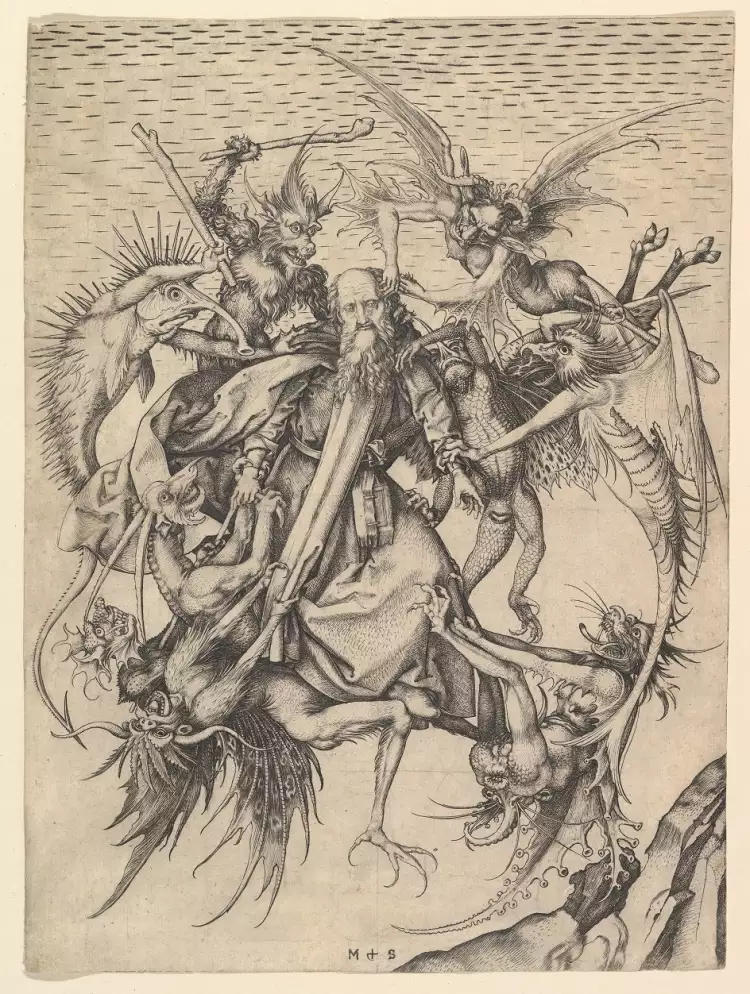 Engraving. Martin Schongauer. The Torment of Saint Anthony, 1487-1489
Engraving. Martin Schongauer. The Torment of Saint Anthony, 1487-1489
In art, various methods have long been used to obtain engraved impressions. Among the most well-known techniques of engravings are:
- Longitudinal or woodcut. The oldest technique. Printing forms were made from longitudinally sawn boards of soft wood species (cherry, apple, pear). The main tool for their processing was knives of different types and sizes. The distinctive feature of compositions is contrast and visual predominance of black lines.
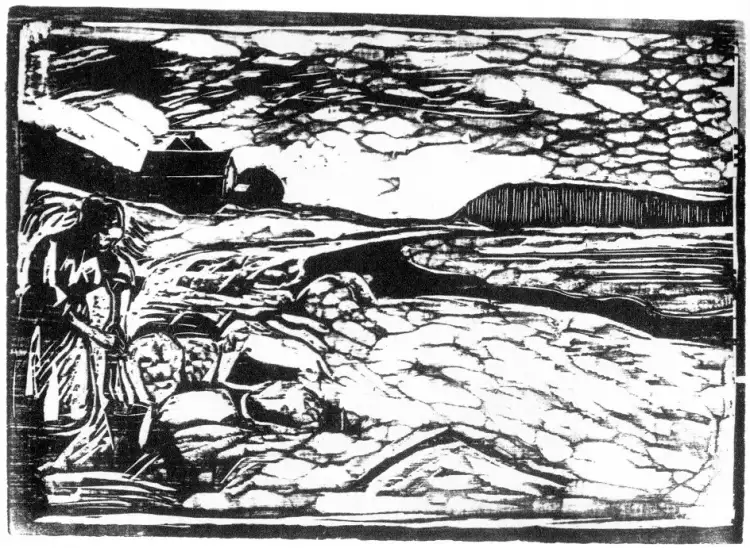 Engraving. Longitudinal woodcut. Edvard Munch. Landscape
Engraving. Longitudinal woodcut. Edvard Munch. Landscape
- Transverse woodcut. The image was carved with a special tool, a burin, on a transversely cut board made of hard wood species (boxwood, beech). Masters gained the ability to depict delicate lines, smoothly varying tonal transitions with strokes of varying depth.
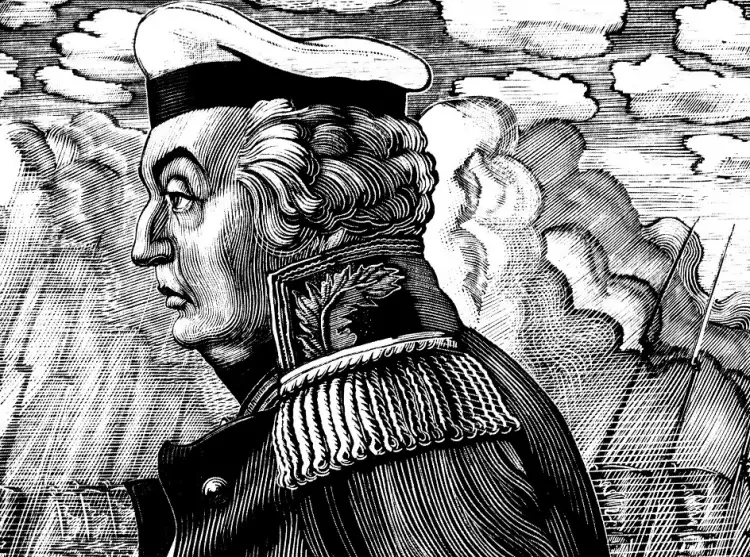 Engraving. Transverse woodcut. Vladimir Favorsky. Portrait of Kutuzov, 1945
Engraving. Transverse woodcut. Vladimir Favorsky. Portrait of Kutuzov, 1945
- Metal line engraving. Emerged in the mid-15th century. The image was carefully cut with special metal engraving tools of square section with a diamond-shaped tip. The characteristic feature of finished images is the dominance of combinations of clean, distinct lines.
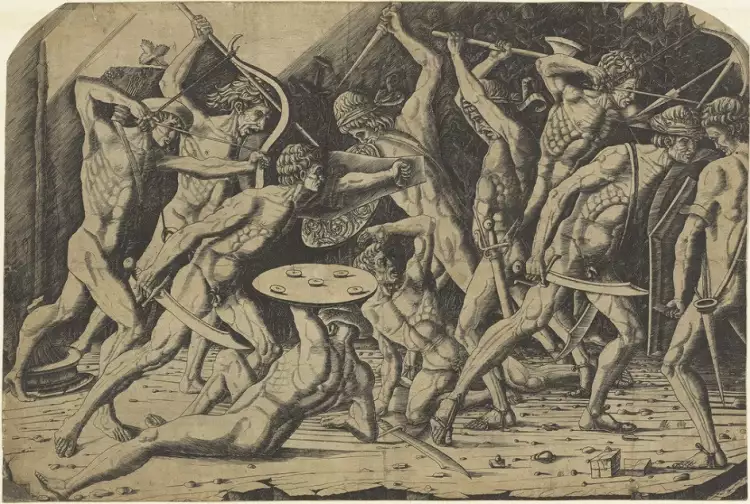 Engraving. Copper engraving. Antonio del Pollaiolo. Battle of Nude Men, circa 1470
Engraving. Copper engraving. Antonio del Pollaiolo. Battle of Nude Men, circa 1470
- Etching. The plate covered with a special acid-resistant varnish was scratched with a needle. Then the plate was etched with acid, which corroded the metal in the recesses. This created a form for deep printing. The needle easily scratched the soft varnish, allowing for the creation of complex drawings in a free manner.
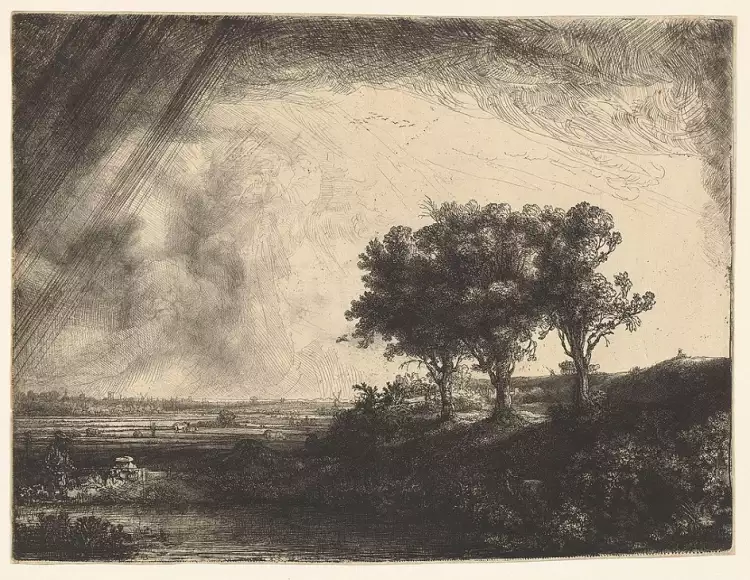 Engraving. Etching. Rembrandt Harmens van Rijn. Three Trees, 1643
Engraving. Etching. Rembrandt Harmens van Rijn. Three Trees, 1643
- Drypoint. Similar to the previous technique, but the surface was not coated with varnish; instead, the metal was simply scratched with a needle to a shallow depth. In terms of graphic texture, it closely resembles a natural drawing made with a pencil.
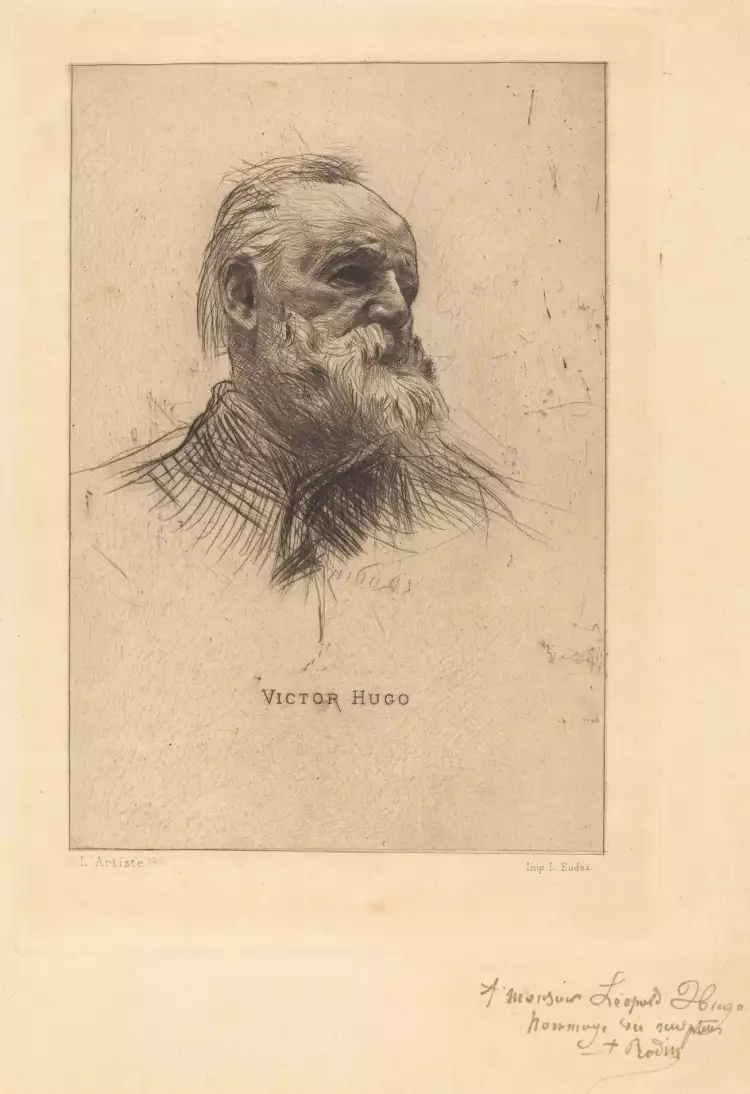 Engraving. Dry Needle. Auguste Rodin. Portrait of writer Victor Hugo
Engraving. Dry Needle. Auguste Rodin. Portrait of writer Victor Hugo
- Pointillism. Images were created from many small points using a engraving hammer on a metal surface covered with lacquer. The image was revealed through the skillful combination of indentations of varying density on the plate.
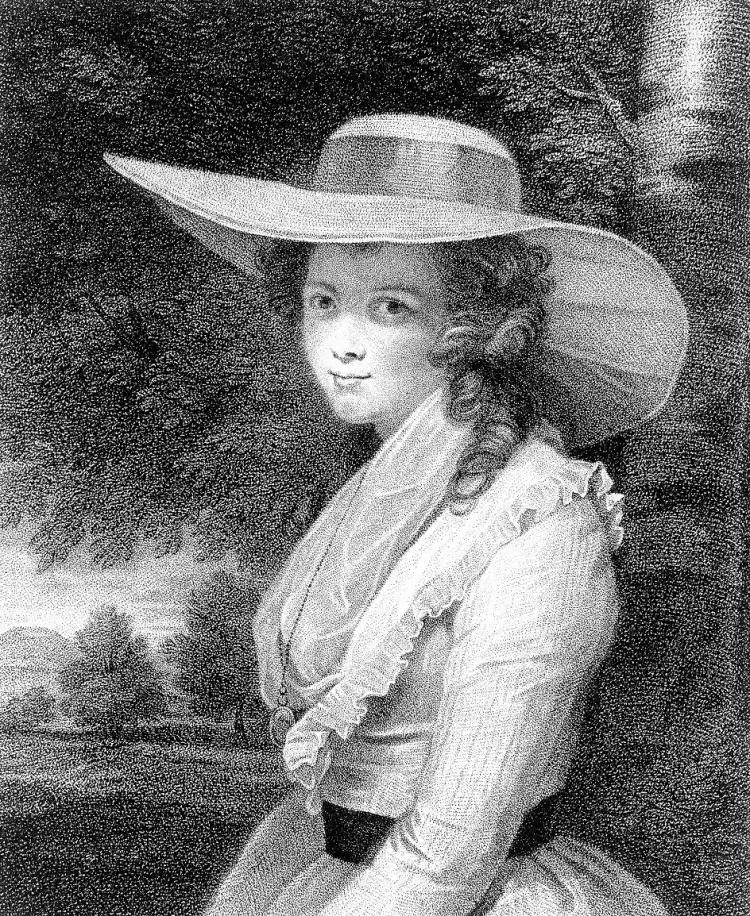 Engraving. Punctuated manner. Francesco Bertolozzi. Portrait of Lavinia Spencer, 1787
Engraving. Punctuated manner. Francesco Bertolozzi. Portrait of Lavinia Spencer, 1787
- Soft ground. A plate primed with sticky varnish had a sheet of paper placed on it. An image was drawn with a pencil on the paper. The varnish adhered to the paper in the areas delineated. The plate was then etched to obtain the form. This technique is characterized by a soft, granular stroke.
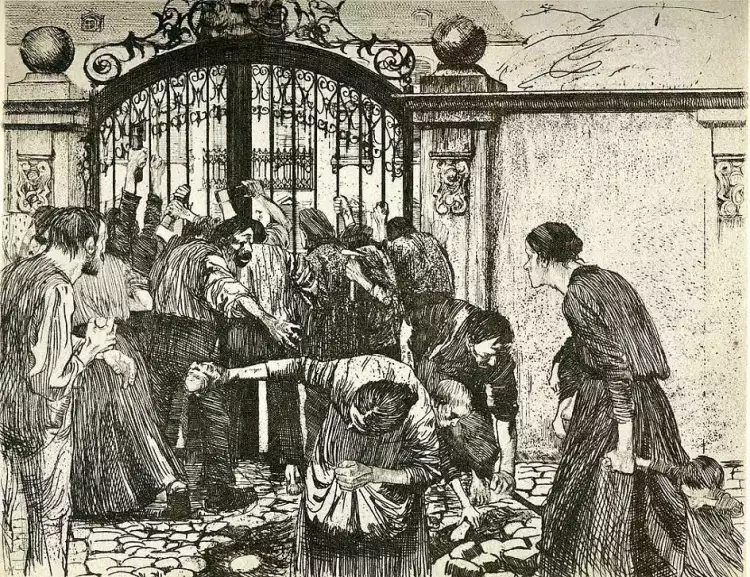 Engraving. Soft varnish. Käthe Kohlwitz. Storming the Gate, 1893-1897
Engraving. Soft varnish. Käthe Kohlwitz. Storming the Gate, 1893-1897
- Aquatint. The plate was covered with a thin layer of rosin or asphalt and scratched with a needle. During the etching process, the acid penetrated not only the recesses created by the needle but also the tiny pores between the particles of the coating. By using several successive etchings, an effect of tonal drawing was achieved.
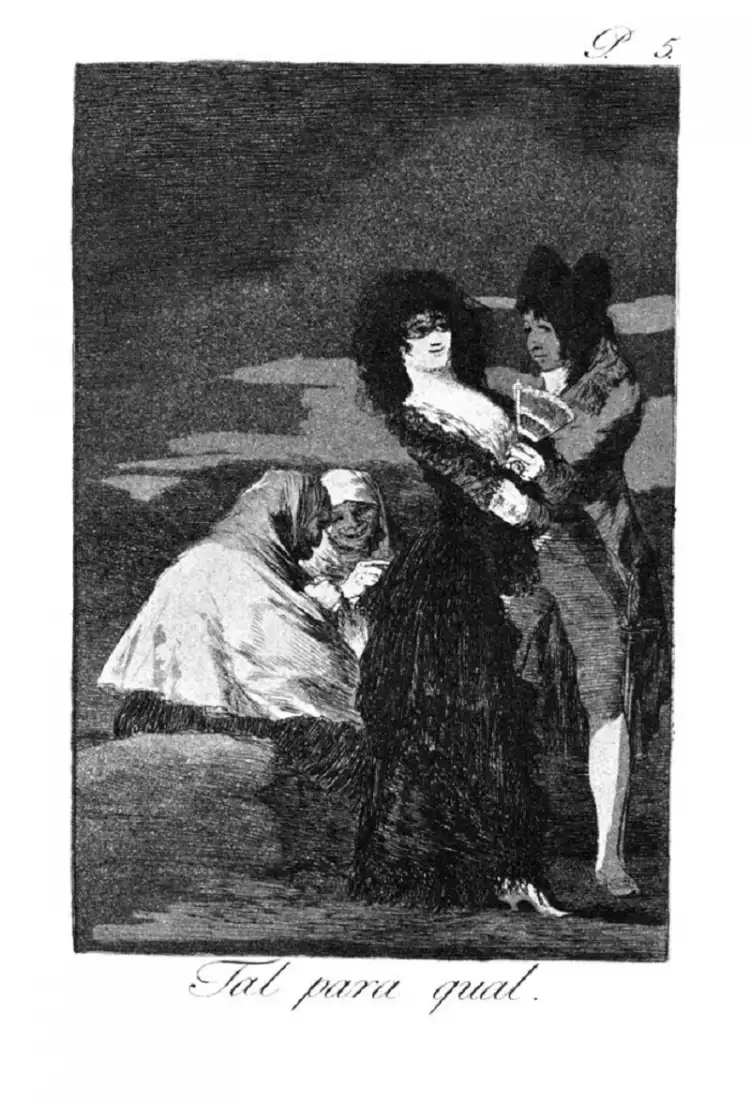 Engraving. Aquatint. Francisco Goya. One is worthy of the other, 1799
Engraving. Aquatint. Francisco Goya. One is worthy of the other, 1799
- Lavis. The subject was painted with a brush soaked in acid on a copper plate coated with resin. The resulting printing plate was used for reproducing impressions. During the printing process, the acid-etched areas were filled with ink.
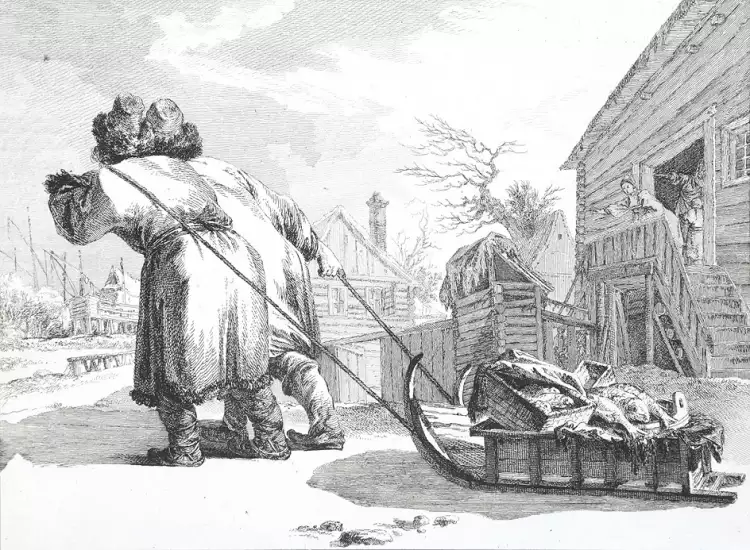 Engraving. Lavis. Jean-Baptiste Leprince. Russian fishmongers, 1764
Engraving. Lavis. Jean-Baptiste Leprince. Russian fishmongers, 1764
- Mezzotint. The image was created by smoothing and scraping the light areas of the drawing on a grained board. It is characterized by a richness of shades of light and shadow and depth of tone.
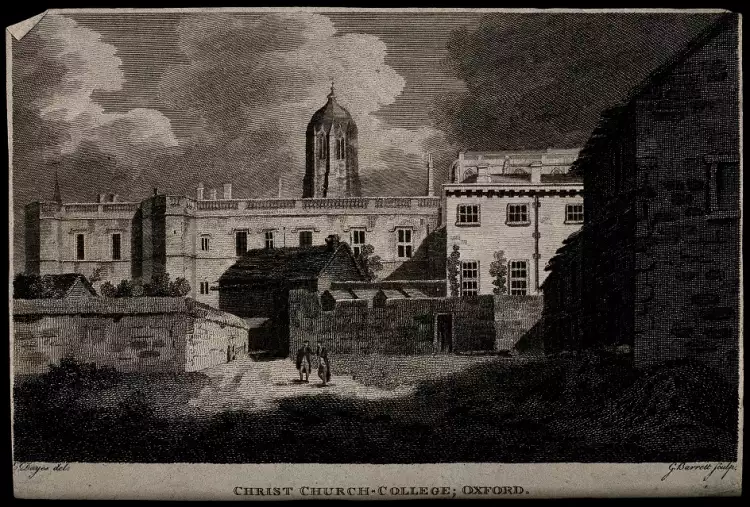 Engraving. Mezzotinto. Edward Dayes. Christ Church, Oxford
Engraving. Mezzotinto. Edward Dayes. Christ Church, Oxford
- Reservage. An artist drew with ink containing sugar on a metal plate, and then covered the plate with acid-resistant varnish. During etching, the sugar dissolved, and the varnish swelled on the delineated areas. This technique accurately conveys the author's drawing on the plate.
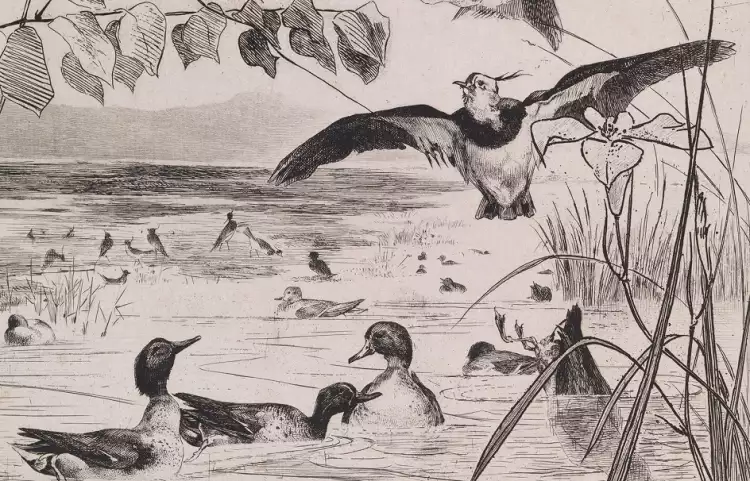 Engraving. Reservage. Felix Bracamont. Landscape with ducks
Engraving. Reservage. Felix Bracamont. Landscape with ducks
- Chiaroscuro. The finished print was created by sequentially printing individual parts of the composition from multiple plates. Each plate differed from the others in tone and color.
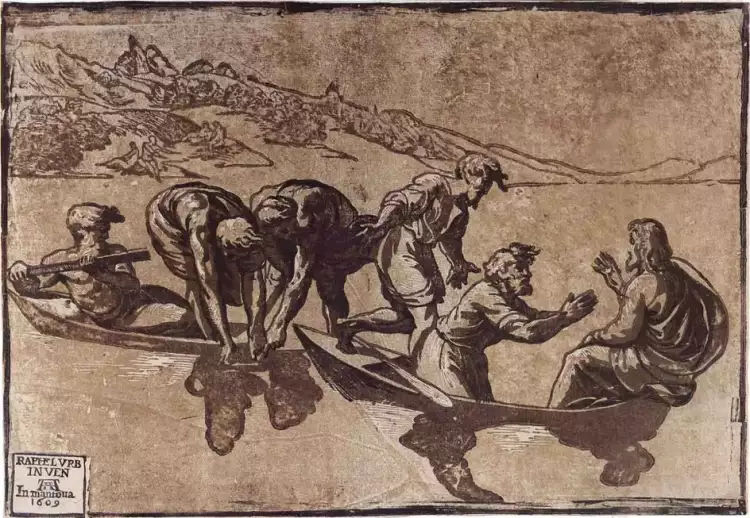 Engraving. Chiaroscuro. Ugo da Carpi. A marvellous catch of fish
Engraving. Chiaroscuro. Ugo da Carpi. A marvellous catch of fish
- Linocut. Smoothly sanded linoleum sheets are used as raw material. In terms of processing technique, it is very similar to longitudinal woodcut. It emerged in the 20th century and is widely used by modern graphic artists.
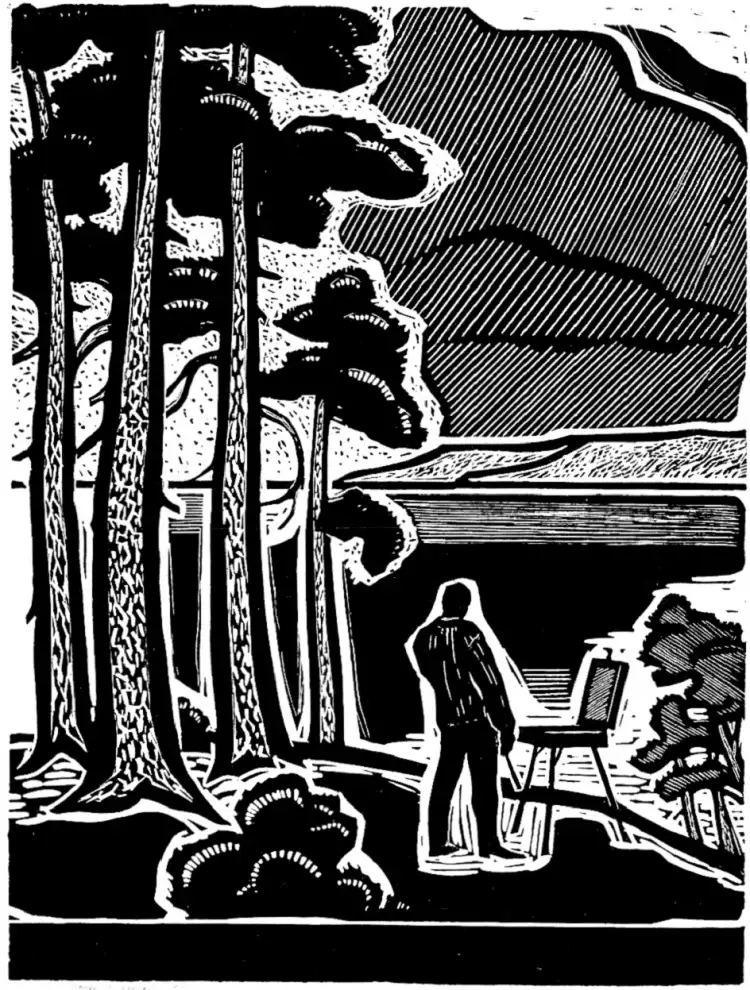 Engraving. Linocut. Alexander Shevchenko. Pines and dunes
Engraving. Linocut. Alexander Shevchenko. Pines and dunes
History of Engraving
The first examples of engraved graphic art in the world emerged in China in the 6th century. However, in Europe, conditions for the birth of a new type of graphic art did not exist for a long time - simply because there was no paper. The history of engraving in the Old World only began in the 14th century - with the invention of printing. At that time, there was an urgent need for reproducing illustrations in books, giving birth to the first technique of engraving printing - woodcut.
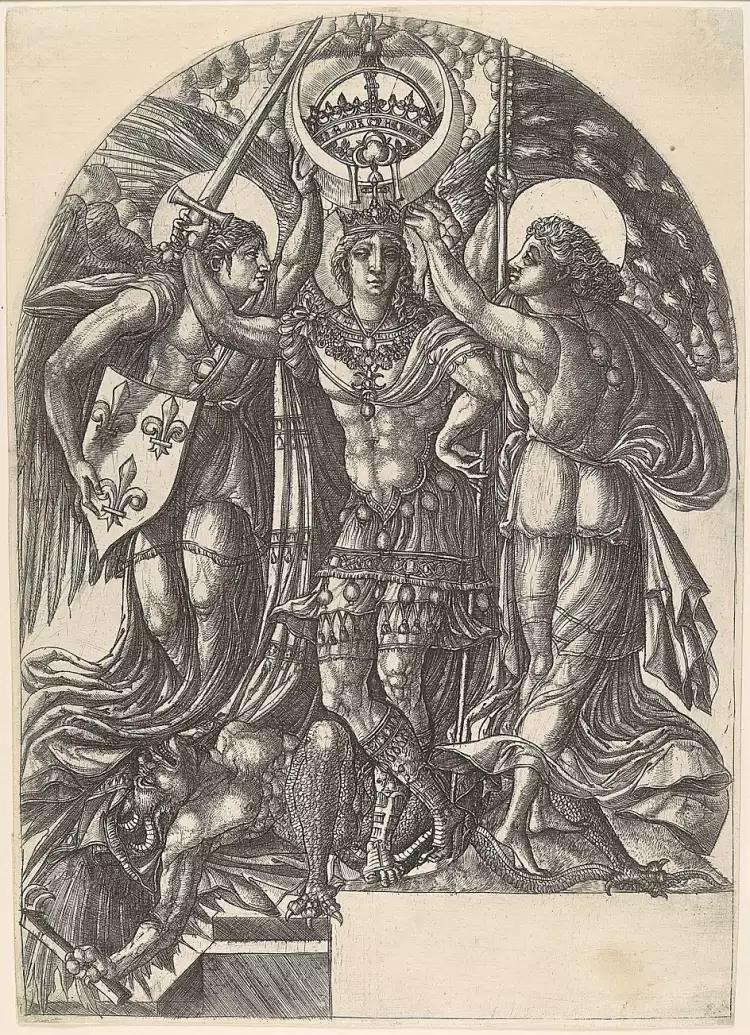 Engraving. Jean Duve. Henry II - King of France, 1548
Engraving. Jean Duve. Henry II - King of France, 1548
Almost simultaneously, in South Germany, metal engraving emerged, and at the beginning of the 16th century, the method of color woodcut - chiaroscuro - was patented in Italy. The year 1513 marks the earliest example of another engraving technique - etching.
Prominent masters of the German Renaissance significantly influenced the development of this new form of graphics:
- Albrecht Dürer.
- Martin Schongauer.
- Michael Wolgemut.
In Italy, works by Antonio del Pollaiolo and Andrea Mantegna gained widespread recognition. Around the same time, the accomplished engraver Lucas van Leyden worked in the Netherlands, and in France, Jean Duvet was active.
In the 17th and 18th centuries, engraving gained tremendous popularity. It was widely used as illustrations in artistic books and scientific works. Reproductions of paintings and original compositions began to adorn the interiors of homes. Constant advancements led to the creation of new techniques:
- Cross-grain woodcut.
- Aquatint.
- Lavis.
- Mezzotint.
- Stippling.
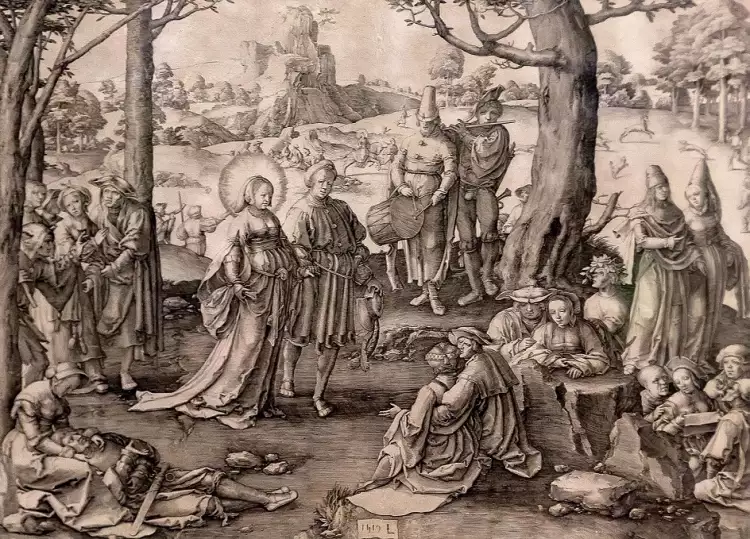 Engraving. Luke of Leiden. Dance of Magdalene, 1519
Engraving. Luke of Leiden. Dance of Magdalene, 1519
In the 19th century, French masters such as Edgar Degas, Camille Corot, Jean-François Millet, James Whistler in the USA, and Max Liebermann in Germany often turned to the etching technique.
At the turn of the 19th and 20th centuries, many representatives of symbolism, realism, and expressionism showed interest in engraving:
- Belgian artist James Ensor.
- French artist Théophile-Alexandre Steinlen.
- English artist Frank Brangwyn.
In the 20th century, with the development of the chemical industry, new materials for creating printing forms emerged. This led to the creation of linocut and the production of plates made of plastic and acrylic glass.
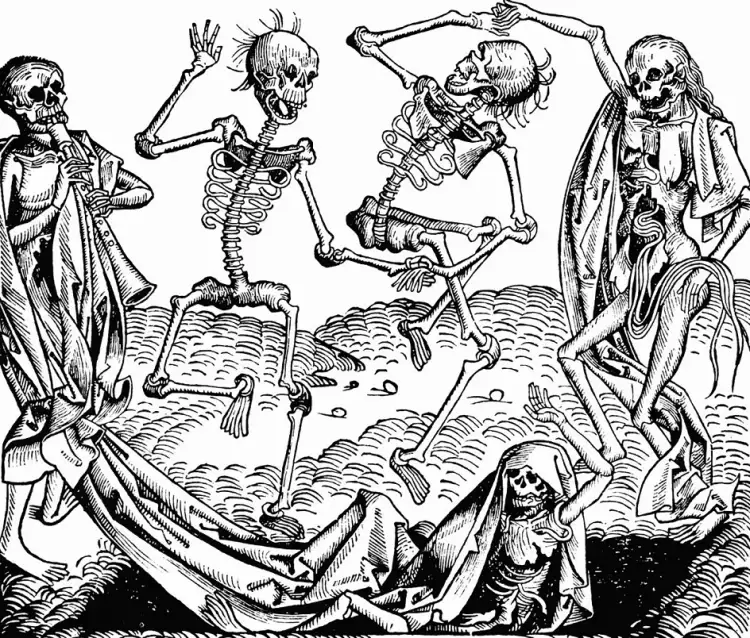 Engraving. Michael Wolgemuth. Danse Macabre, 1493
Engraving. Michael Wolgemuth. Danse Macabre, 1493
Contemporary masters of visual art also often use engraving techniques to create their works. The masterpieces of old artists continue to captivate descendants and adorn numerous galleries in major cities around the world.
On the Very Important Lot website, visitors from all corners of the Earth can participate in auctions and acquire artworks from different eras. Additionally, our platform provides people with the opportunity to directly purchase paintings from contemporary artists.

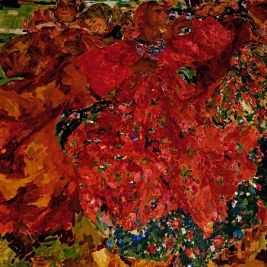 The painting " The Whirlwind" by Filipp Andreevich Malyavin is an inspiring hymn to the beauty and strength of character of Russian peasant women
The painting " The Whirlwind" by Filipp Andreevich Malyavin is an inspiring hymn to the beauty and strength of character of Russian peasant women 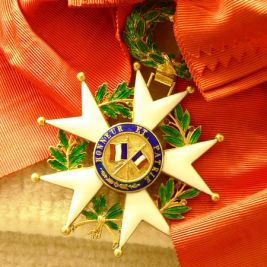 The National Order of the Legion of Honour
The National Order of the Legion of Honour  Digital and Interactive Art: Redefining User Experience in Contemporary Art
Digital and Interactive Art: Redefining User Experience in Contemporary Art  Sculpture is the unique art of creating three-dimensional artistic works
Sculpture is the unique art of creating three-dimensional artistic works 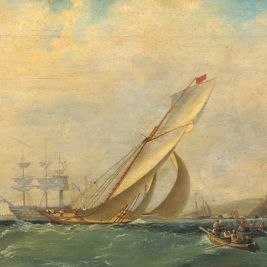 Marine landscape is the most romantic genre of visual art: history, artists, and paintings
Marine landscape is the most romantic genre of visual art: history, artists, and paintings 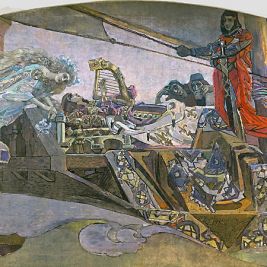 Modern - breakthrough or just a transitional period
Modern - breakthrough or just a transitional period 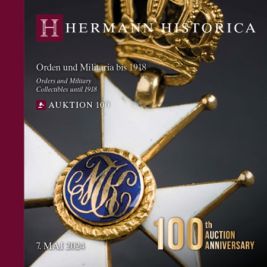 100th Auction at HERMANN HISTORICA from 7 to 16 May 2024
100th Auction at HERMANN HISTORICA from 7 to 16 May 2024 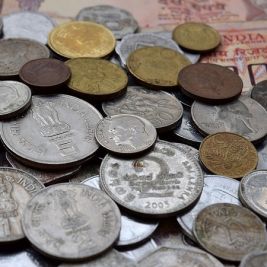 Numismatics is a serious scientific discipline or enthusiastic collection of ancient coins
Numismatics is a serious scientific discipline or enthusiastic collection of ancient coins 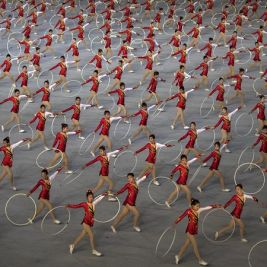 Documentary Photography: Photo story about important events and everyday life
Documentary Photography: Photo story about important events and everyday life 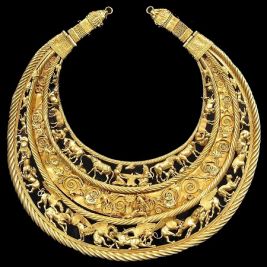 Jewelry craftsmanship - an ancient art of creating unique masterpieces from precious materials
Jewelry craftsmanship - an ancient art of creating unique masterpieces from precious materials